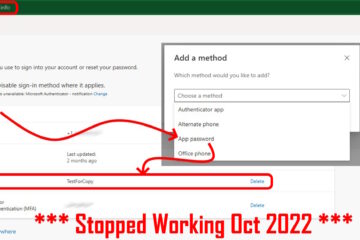In the ever-evolving business landscape, small businesses are increasingly turning towards digital transformation to streamline operations and enhance efficiency.
The shift from manual processes to sophisticated software solutions marks a pivotal change in how these businesses operate, compete, and grow.
This article delves into the transformative journey of small businesses embracing digital tools, shedding light on the challenges, opportunities, and tangible impacts of this crucial transition.
The Benefits of Digitizing Small Business Activities
Digitizing small business activities brings a multitude of benefits, pivotal for thriving in today’s fast-paced market. Let’s see those benefits below:
Increased Productivity through Small Business Management Software
Digitizing operations with small business management software can transform how tasks are handled. This type of software automates routine operations such as invoicing, payroll, scheduling, and customer communications.
By automating these tasks, the software not only saves time but also reduces the likelihood of human errors, leading to more streamlined and efficient business processes.
This shift allows employees to redirect their focus towards more strategic, value-adding activities, ultimately boosting overall productivity.
Additionally, such software often comes with user-friendly interfaces, making it easier for small business owners and their teams to manage day-to-day operations effectively.
Cost Reduction through Technology
Using digital tools, such as cloud-based solutions like vcita, can substantially reduce operational expenses by eliminating the necessity for costly hardware and extensive IT upkeep.
Moreover, digital marketing can be more cost-effective compared to traditional methods, offering a higher ROI. Small businesses can allocate resources more effectively, investing in areas that drive growth.
Enhanced Customer Experience
Digital platforms like websites, social media, and customer relationship management (CRM) systems enable small businesses to interact with customers more effectively.
Online booking systems, chat support, and personalized marketing enhance the customer journey, making it more convenient and tailored. This improved interaction can lead to increased customer satisfaction and loyalty.
Data-Driven Decision Making
Digital tools provide access to a wealth of data, from sales trends to customer preferences.
This information can be analyzed to gain insights into market trends, customer behavior, and business performance.
With these insights, small business owners can make informed decisions about product development, marketing strategies, and operational improvements.
Remote Work and Flexibility
Digitalization supports the trend towards remote work, offering employees and business owners flexibility in their work location and hours.
This not only helps in maintaining business continuity during disruptions like the COVID-19 pandemic but also opens up a wider talent pool, as geographical constraints are minimized.
Moreover, this transition can boost efficiency and productivity, leading to a better work-life balance for employees. This improvement in balance contributes to higher job satisfaction and overall productivity.
The Expected Trend
The trend of transforming small business operations with software solutions is expected to accelerate significantly in the coming years. This transformation is driven by several key factors:
Accessibility of Advanced Technologies
- Cloud Computing: Small businesses increasingly leverage cloud-based solutions for their affordability and scalability. Cloud computing allows small businesses to access high-level computing resources without the need for significant upfront investment in IT infrastructure.
- SaaS Products: The proliferation of Software as a Service (SaaS) products offers small businesses access to sophisticated tools for everything from accounting and customer relationship management (CRM) to inventory management, often on a subscription basis that scales with usage.
Improved Customer Experience
- CRM Systems: CRM software allows small businesses to manage customer interactions more effectively, leading to improved customer satisfaction and loyalty.
- E-commerce Integration: As online shopping continues to grow, integrating e-commerce platforms with other business systems helps small businesses reach a wider market and offer seamless customer experiences.
Analyzing Business Performance with Digital Tools
Analyzing business performance with digital tools is a multifaceted process that integrates various software and technologies to gather, process, and interpret data for informed decision-making.
The journey begins by setting clear objectives, which might include:
- Increasing sales
- Improving customer satisfaction
- Reducing operational costs
These goals are crucial as they guide the selection of relevant data and analytical tools.
Next step: Involves the Collection of Pertinent Data
The next step involves the collection of pertinent data. This data comes from diverse digital sources such as CRM systems, sales databases, social media analytics, website traffic statistics, and financial software. The accuracy and timeliness of this data are paramount for reliable analysis.
Selecting the right tools is an integral part of this process. Depending on the business size and needs, this selection can range from sophisticated tools like Google Analytics, Tableau, Microsoft Power BI, and Salesforce, to more cost-effective or even free tools that offer basic analytics capabilities.
For instance, Google Analytics is instrumental in evaluating website performance, while CRM software is pivotal in tracking customer interactions, helping tailor marketing strategies and improve customer service.
Financial Analysis – Critical Aspect
Financial analysis is another critical aspect, with accounting software being used to analyze key financial data such as revenue, expenses, and profit margins. This analysis is foundational in identifying financial strengths and weaknesses, thereby informing budgetary decisions.
Tracking performance metrics is essential. Businesses identify key performance indicators (KPIs) relevant to their objectives and use digital dashboards for a real-time view of their performance. This continuous tracking aids in keeping the business aligned with its goals.
Conclusion
In summary, the article underscores the pivotal role of digital transformation in empowering small businesses.
The shift from manual to digital processes is essential for enhancing efficiency, reducing costs, and improving customer experiences.
This transition to software solutions and digital tools not only boosts productivity by automating routine tasks but also provides valuable insights for data-driven decision-making.
As the business landscape continues to evolve, embracing digital technologies becomes crucial for small businesses to remain competitive and adaptable. Looking ahead, the trend towards digitalization is expected to accelerate, marking a significant step in the growth and sustainability of small enterprises in the modern market.




0 Comments